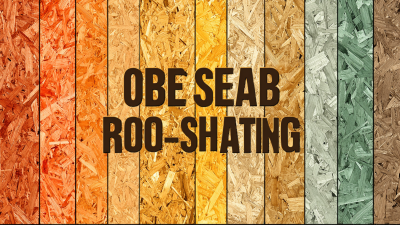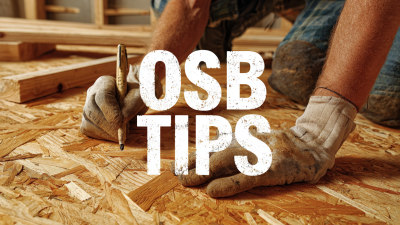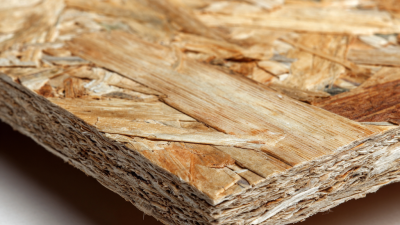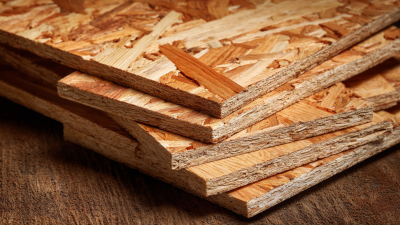In the ever-evolving landscape of construction, selecting the right materials is crucial for ensuring durability and efficiency. OSB sheathing, or oriented strand board, has emerged as a popular choice among home builders due to its advantageous properties. According to a report from the National Wood Flooring Association, OSB sheathing accounts for approximately 50% of the total sheathing market as builders increasingly recognize its strength and cost-effectiveness. This engineered wood product offers superior load-bearing capabilities and moisture resistance compared to traditional plywood, making it ideal for a variety of applications.
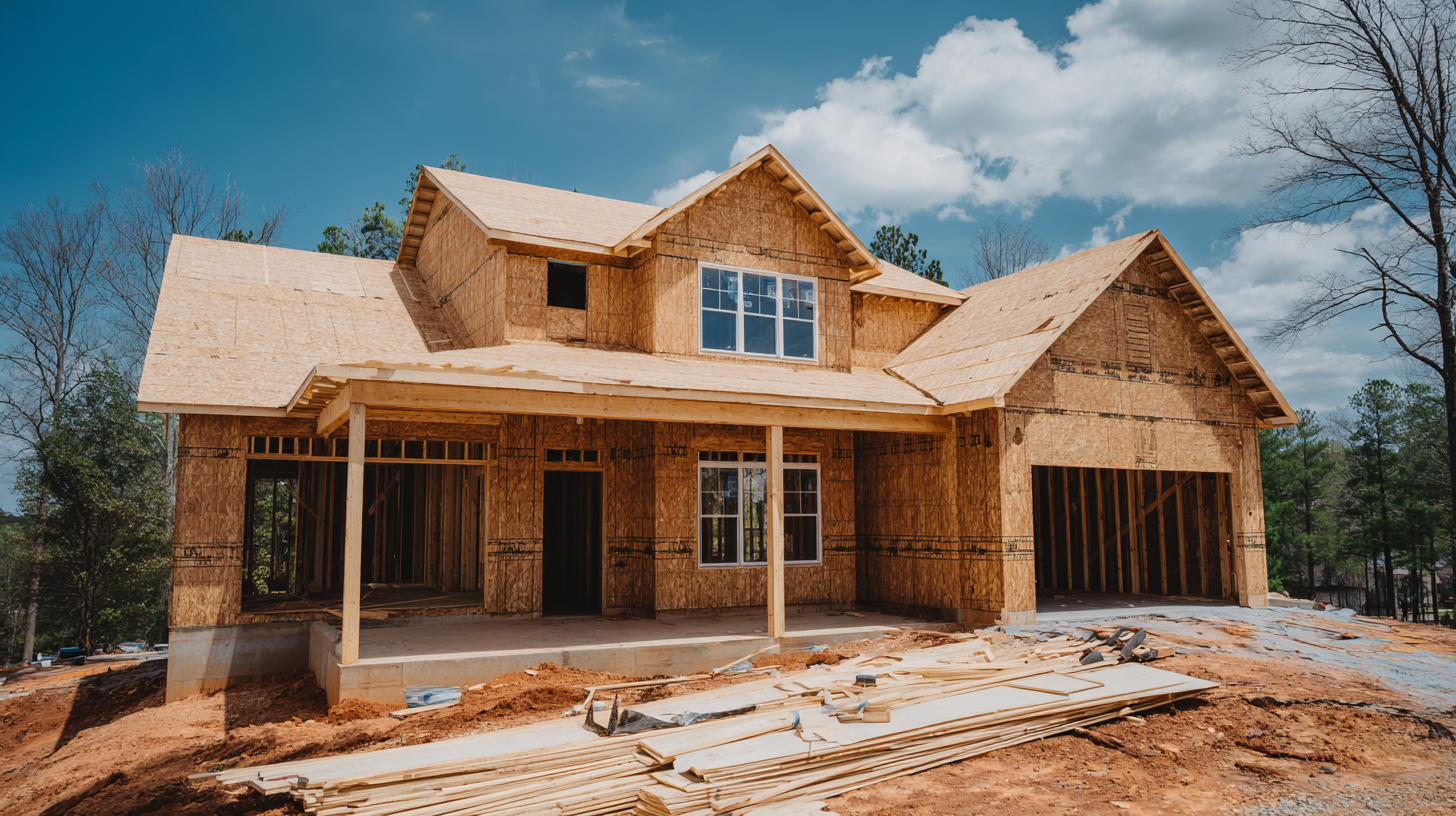
Moreover, industry research indicates that projects utilizing OSB sheathing often achieve significant labor and material savings, contributing to faster build times and reduced overall costs. By unlocking the benefits of OSB sheathing, home builders can not only enhance the structural integrity of their projects but also optimize their resources, leading to a more sustainable approach in the competitive construction market.
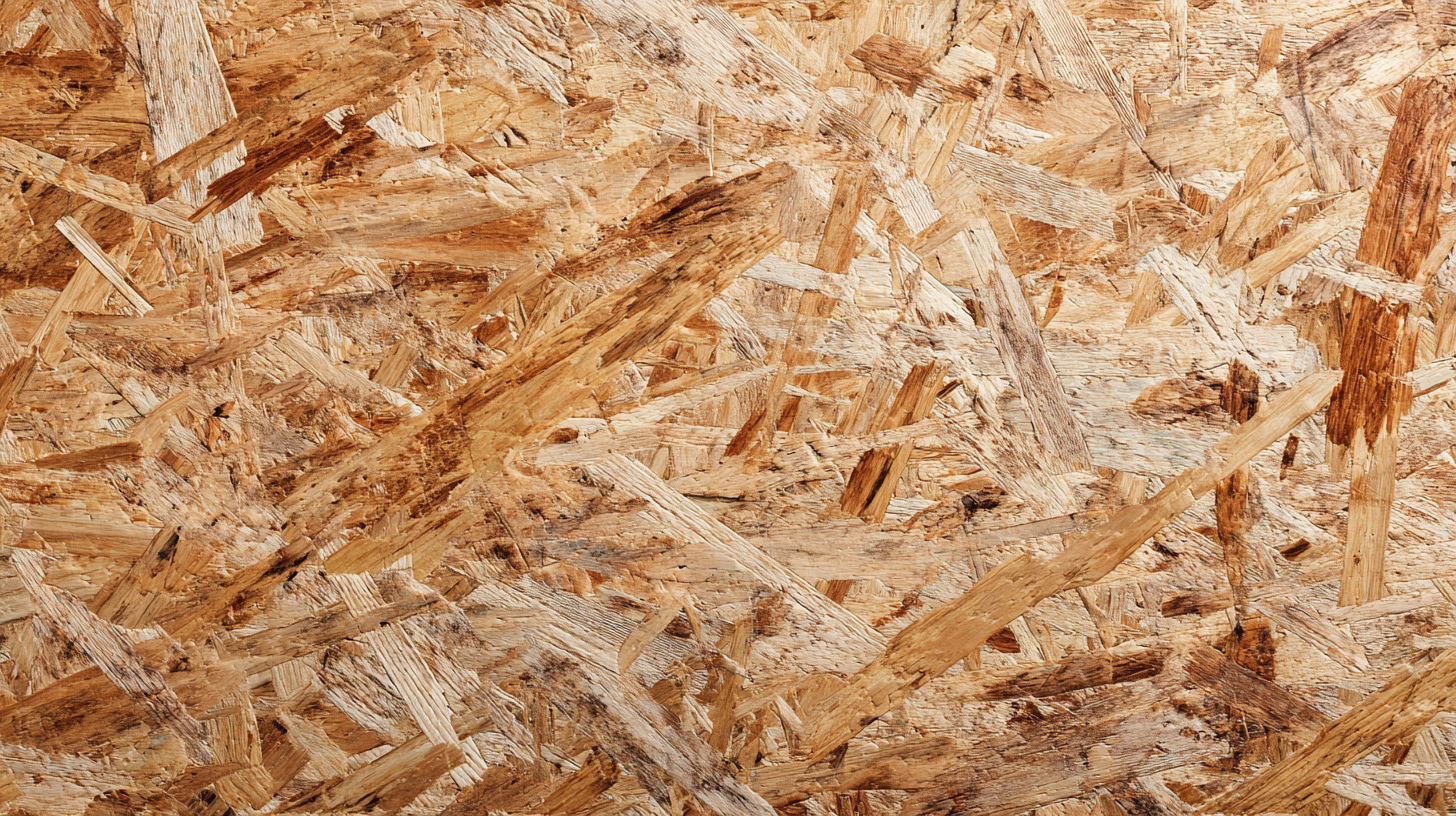 OSB (Oriented Strand Board) sheathing has increasingly become a preferred choice for modern home building, providing numerous advantages that align with current industry standards. According to the APA – The Engineered Wood Association, OSB is noted for its structural integrity and durability, often outperforming plywood in both strength and moisture resistance. With a bending strength of up to 2,000 psi, OSB sheathing ensures that homes are built to endure various environmental stresses, making it a reliable foundation for construction.
OSB (Oriented Strand Board) sheathing has increasingly become a preferred choice for modern home building, providing numerous advantages that align with current industry standards. According to the APA – The Engineered Wood Association, OSB is noted for its structural integrity and durability, often outperforming plywood in both strength and moisture resistance. With a bending strength of up to 2,000 psi, OSB sheathing ensures that homes are built to endure various environmental stresses, making it a reliable foundation for construction.
In addition to its physical properties, OSB sheathing contributes to enhanced energy efficiency in residential buildings. Research from the U.S. Department of Energy highlights that proper insulation combined with OSB sheathing can lead to a significant reduction in heating and cooling costs, potentially decreasing energy expenses by 10-15%. Furthermore, OSB’s sustainable manufacturing process, using less material and generating less waste compared to traditional wood products, resonates with environmentally conscious builders looking to minimize their ecological footprint, thereby solidifying OSB's role as a strong and sustainable foundation in contemporary home construction.
When it comes to selecting sheathing materials, the choice between oriented strand board (OSB) and plywood can significantly influence both construction costs and structural integrity.
OSB, composed of strands of wood that are glued and pressed together, typically offers a more cost-effective solution compared to plywood, which is made from thin layers of veneer. This difference in manufacturing results in OSB being generally less expensive, making it an attractive option for home builders working within tight budgets.
However, the advantages of OSB extend beyond just cost savings. OSB exhibits excellent structural properties and moisture resistance, making it suitable for various climates and construction applications. While plywood may hold up better under certain conditions, advancements in OSB technology have significantly improved its performance. Builders often find that the reduced cost of OSB can offset any potential downsides, allowing for an overall budget-friendly approach without compromising the quality of the build. In comparing OSB and plywood, it becomes clear that the decision hinges on both economic considerations and the specific needs of the project at hand.
When selecting the right OSB (Oriented Strand Board) sheathing for your construction project, it's essential to consider a few key factors. Firstly, evaluate the thickness of the OSB panels you require. Thicker panels provide increased strength and better insulation, which is crucial for structural integrity and energy efficiency. Common thicknesses range from 3/8 inch to 1 inch, so choose according to your project's specific needs and building codes.
Next, consider exposure ratings which indicate the OSB’s ability to withstand moisture. For applications that experience high humidity or temporary exposure to rain, select panels rated for exterior use. Additionally, check the manufacturer's specifications regarding the wood strand orientation, as this affects the sheathing's overall performance and durability. Finally, sourcing OSB from reputable suppliers ensures you receive panels that meet quality standards, providing peace of mind and reliability throughout your project.
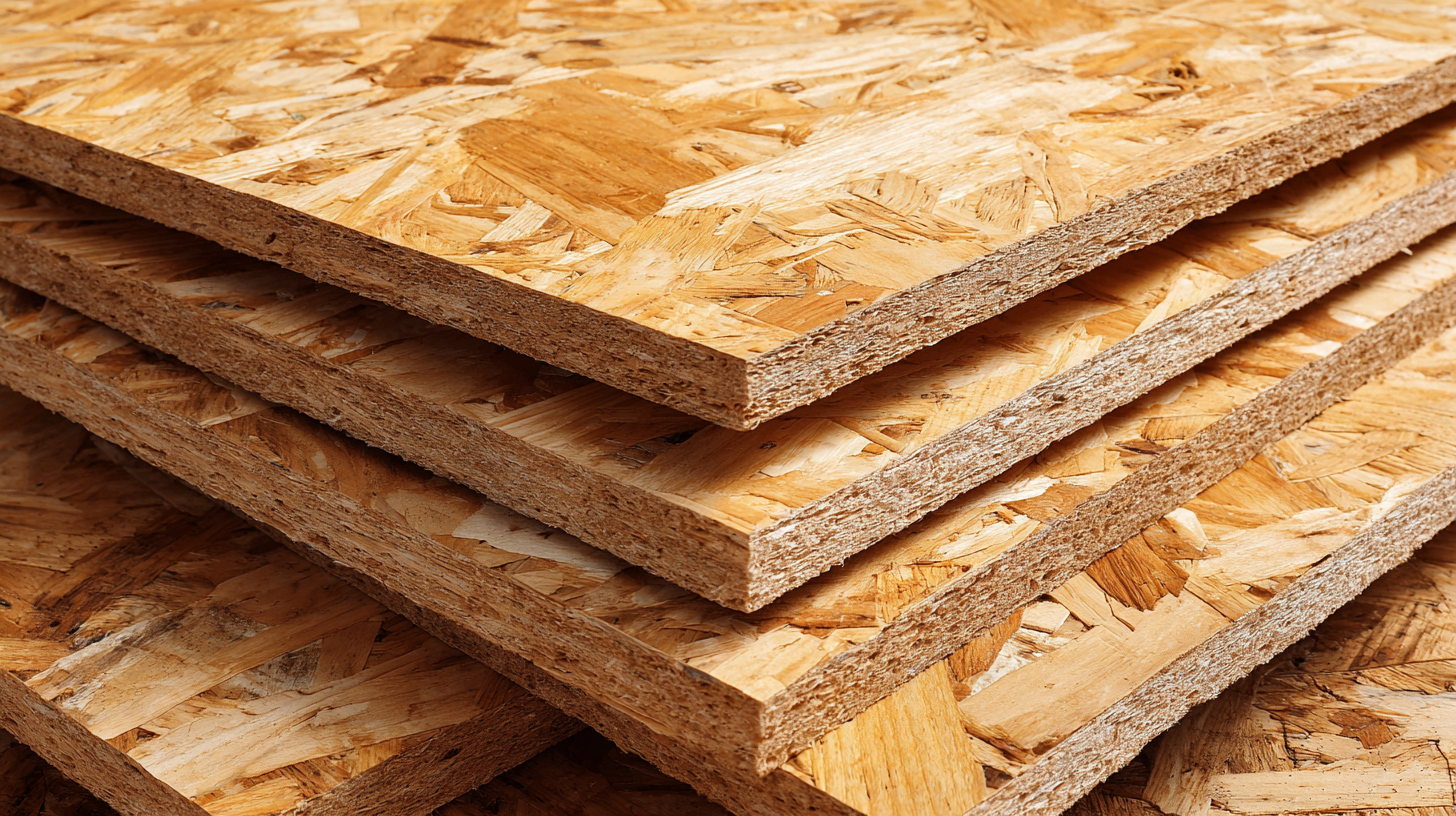
Oriented Strand Board (OSB) sheathing is increasingly recognized for its
sustainability advantages in home construction. Made from wood strands oriented in specific directions and bonded with adhesives, OSB utilizes
lesser-known tree species and uses typically waste wood materials, contributing to reduced environmental impact. This efficient use of raw materials not only conserves resources but also minimizes the
carbon footprint associated with harvesting more traditional lumber.
Furthermore, OSB sheathing boasts excellent insulation properties, which can enhance energy efficiency in homes. By offering better thermal resistance, it helps maintain stable indoor temperatures, reducing the reliance on heating and cooling systems. This
energy efficiency translates into lower energy bills and less strain on power resources, thereby contributing to a more sustainable living environment. Additionally, because OSB can be sourced from sustainably managed forests, it aligns with
eco-friendly building practices that prioritize the health of our planet.
Oriented Strand Board (OSB) sheathing plays a crucial role in enhancing the energy efficiency of modern homes. Designed with interlocking strands of wood, OSB creates a sturdy barrier that provides excellent insulation properties. This structural core not only contributes to the overall strength of the building but also minimizes air leaks, helping to maintain a stable indoor temperature. By reducing the amount of energy required for heating and cooling, OSB sheathing proves to be a cost-effective choice for home builders aiming to promote sustainability.
Incorporating OSB sheathing in construction practices allows builders to achieve higher energy efficiency ratings for their projects. The material's superior thermal resistance helps keep conditioned air within the home, significantly lowering energy consumption and utility bills. Additionally, OSB's moisture resistance capabilities combat the risk of mold growth, ensuring a healthier living environment. As homeowners increasingly prioritize energy-efficient solutions, the use of OSB sheathing stands out as an exemplary choice that aligns with modern building standards and environmental considerations.
This chart illustrates the thermal resistance (R-value) of various insulation materials, highlighting the contribution of OSB sheathing to energy efficiency. As shown, OSB sheathing offers comparable thermal resistance to traditional plywood, making it a viable option for enhancing home insulation.

